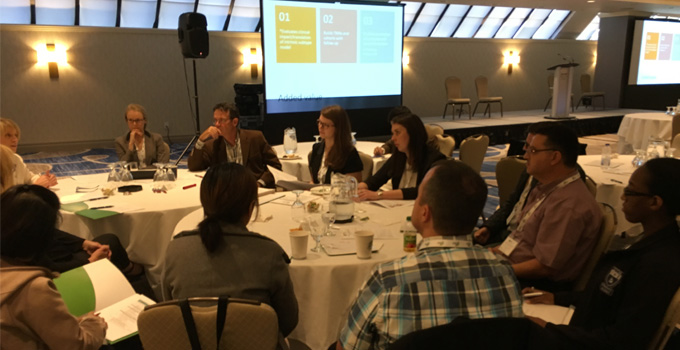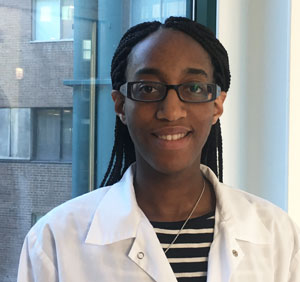
In this post, Monique Johnson shares how the Ontario Molecular Pathology Research Network’s (OMPRN) 2017 Pathology Matters Meeting provided her with new insights into the field and introduced her to Ontario’s molecular pathology community.
I hold a M.Sc. in forensic science and work as a Research Technologist at The Hospital for Sick Children in Dr. Cynthia Hawkins’ lab. I have only worked there for a month, so I am quite new to the field of molecular pathology. My colleagues encouraged me to attend the OMPRN Pathology Matters Meeting on October 5 and 6 in Toronto and it ended up being a very worthwhile experience.
Although there weren’t any talks focusing specifically on paediatric brain tumours, which is my current area of study, the research and techniques presented still related to my work. It was fascinating to see the shift in technology from visually determining the type of tumour on a slide to looking at the gene expression within tumours and using that information to help guide and personalize treatment. It is a shift that is necessary to keep up with the complexity of gene expression within and between tumour cells and to detect new mutations that have gained resistance to current drug treatments.
 Being that this was my first molecular pathology meeting I thought I would be overwhelmed, but I found everything to be interesting and informative. This meeting felt like a massive community of individual experts working together to help each other learn and grow. I could see from the questions and feedback given throughout the talks that new ideas were forming. Many people left with thoughts of how to further their own research and new collaborations were being formed between researchers from across the province.
Being that this was my first molecular pathology meeting I thought I would be overwhelmed, but I found everything to be interesting and informative. This meeting felt like a massive community of individual experts working together to help each other learn and grow. I could see from the questions and feedback given throughout the talks that new ideas were forming. Many people left with thoughts of how to further their own research and new collaborations were being formed between researchers from across the province.
If I had to choose my favourite parts of the meeting, I’d have to say that I enjoyed the talk by Dr. Lincoln Stein on adaptive oncology, a conceptual theme in which OICR has grouped some areas of research. It is something that I believe will improve the survival rate of patients, as new mutations could be detected earlier from the tumour cells remaining after treatment. I was fascinated with Dr. Phedias Diamandis’ talk on proteomic biomarker discovery in clinically malignant meningiomas. The fact that his team was able to use mass spectrometry to detect different proteins found in these tumours is remarkable given how challenging this is. Lastly, I thought that the biospecimen clinic was very informative and essential for allowing new cancer research to be conducted, especially in labs that wouldn’t have enough samples on their own.
As a whole, I felt that the meeting brought together a good mixture of experts in different fields and allowed them to interact in new ways. If OMPRN continues to structure their annual meetings like this they’ll continue to be very successful.
